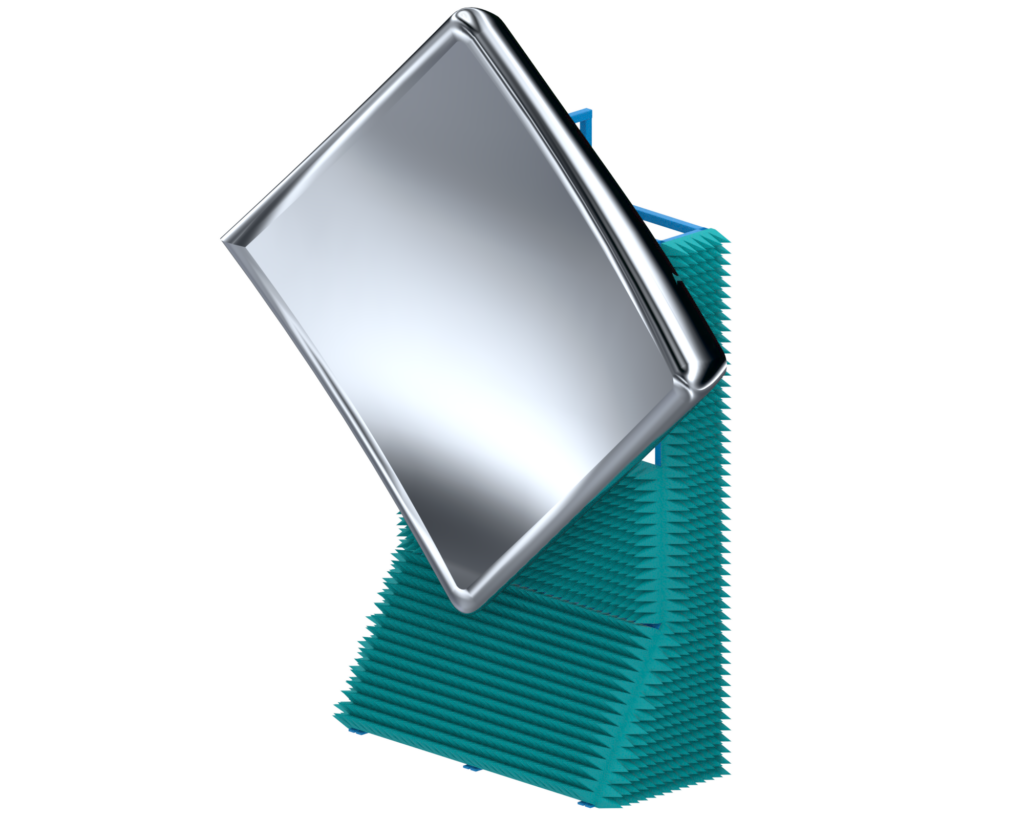
COMPACT RANGE REFLECTORS
ROLLED EDGE
When the feed antenna of a parabolic reflector illuminates the surface, currents are generated and travel in all directions. Once the currents reach the exterior edges, they scatter, in a variety of directions, with some contributions in the measurement zone. These contributions corrupt the desired planewave and therefore must be mitigated. There are two principal means of terminating the edges of a reflector, one uses a blended rolled edge concept while the other uses serrations. The role of either method is to dissipate the currents as they travel.
The rolled edge approach slowly alters the shape of the reflector such that the current radiate around the curve and dissipate in the chamber absorber. The serrated edge approach uses serrated extensions such that the currents dissipate as they travel along the serrations.
DSC has designed and installed both reflector types based on the physics required by each customer’s needs. This physics-based approach frees DSC from any single approach to provide the best option for our customers.
